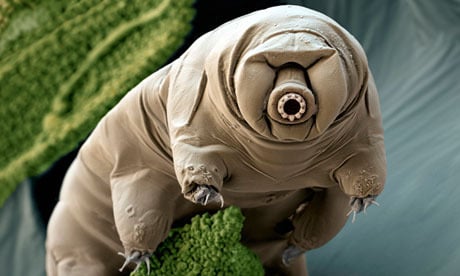|
|
Post by Venomous Dragon on Feb 13, 2016 23:50:27 GMT 5
If those are really crocodile bitemarks indented in that tail, I'm surprised that it lived to tell the tale. im not |
|
|
|
Post by Supercommunist on Feb 14, 2016 2:28:21 GMT 5
Crocodilian master race.
|
|
|
|
Post by Supercommunist on Apr 7, 2016 6:46:09 GMT 5
|
|
|
|
Post by Infinity Blade on Apr 7, 2016 7:11:46 GMT 5
Oh my god.....that's a tough boar.
I wonder what caused the injury in the first place.
|
|
|
|
Post by Supercommunist on Apr 7, 2016 9:10:06 GMT 5
Got shot apparently.
|
|
|
|
Post by Supercommunist on May 2, 2016 3:33:23 GMT 5
|
|
|
|
Post by Ceratodromeus on May 16, 2016 3:40:28 GMT 5
"This is Leroy. He is an American Alligator that was rescued after taking Boat Prop to the face. He lost his top lip, left front foot and the end of his tail. But he still can survive with assistance. I asked what they are going to do with him once he gets to his full size of over 12 ft and they said they think about that when the time comes!"  rickshawusa.blogspot.com/2010/01/reed-bingham-state-park-pictures.html rickshawusa.blogspot.com/2010/01/reed-bingham-state-park-pictures.html |
|
full
Junior Member
 
Posts: 104 
|
Post by full on May 28, 2016 19:15:41 GMT 5
This is what immortality looks like:  |
|
|
|
Post by spartan on May 28, 2016 19:57:41 GMT 5
Don't these things just live for about one year when they don't enter cryptobiosis?
|
|
|
|
Post by Supercommunist on Jun 6, 2016 11:02:48 GMT 5
|
|
|
|
Post by Infinity Blade on Apr 19, 2017 8:19:53 GMT 5
|
|
|
|
Post by theropod on Apr 21, 2017 19:53:04 GMT 5
Sue has a massive exostosis on its left fibula, so very clearly pathological, but not necessarily a fracture.
Brochu (2003) seems to consider it to be more likely another case of the osteomyelitis that’s widespread in Sue’s skeleton, though of course that doesn’t really rule out a fracture.
Rothschild & Molnar 2008 state it to be a fracture in Figure 17.3. Neither work seems to have scanned it though. Which is really a shame since both made use of X-rays and CTs elsewhere…
I’ve read repeated claims about a CT scan, but could not find a study to go with them.
Brochu, C. A. 2003. Osteology of Tyrannosaurus rex: insights from a nearly complete skeleton and high-resolution computed tomographic analysis of the skull. Journal of Vertebrate Paleontology 22 (sup4): 1–138.
Rothschild, B. M., Molnar, R. E., Larson, P. and Carpenter, K. 2008. Tyrannosaurid pathologies as clues to nature and nuture in the Cretaceous. Tyrannosaurus rex, the Tyrant King. Indiana University Press, Bloomington: 287–304.
|
|
|
|
Post by Supercommunist on Jun 29, 2017 23:25:22 GMT 5
|
|
|
|
Post by Infinity Blade on Sept 16, 2017 7:18:09 GMT 5
|
|
|
|
Post by Supercommunist on Oct 18, 2017 2:01:53 GMT 5
|
|